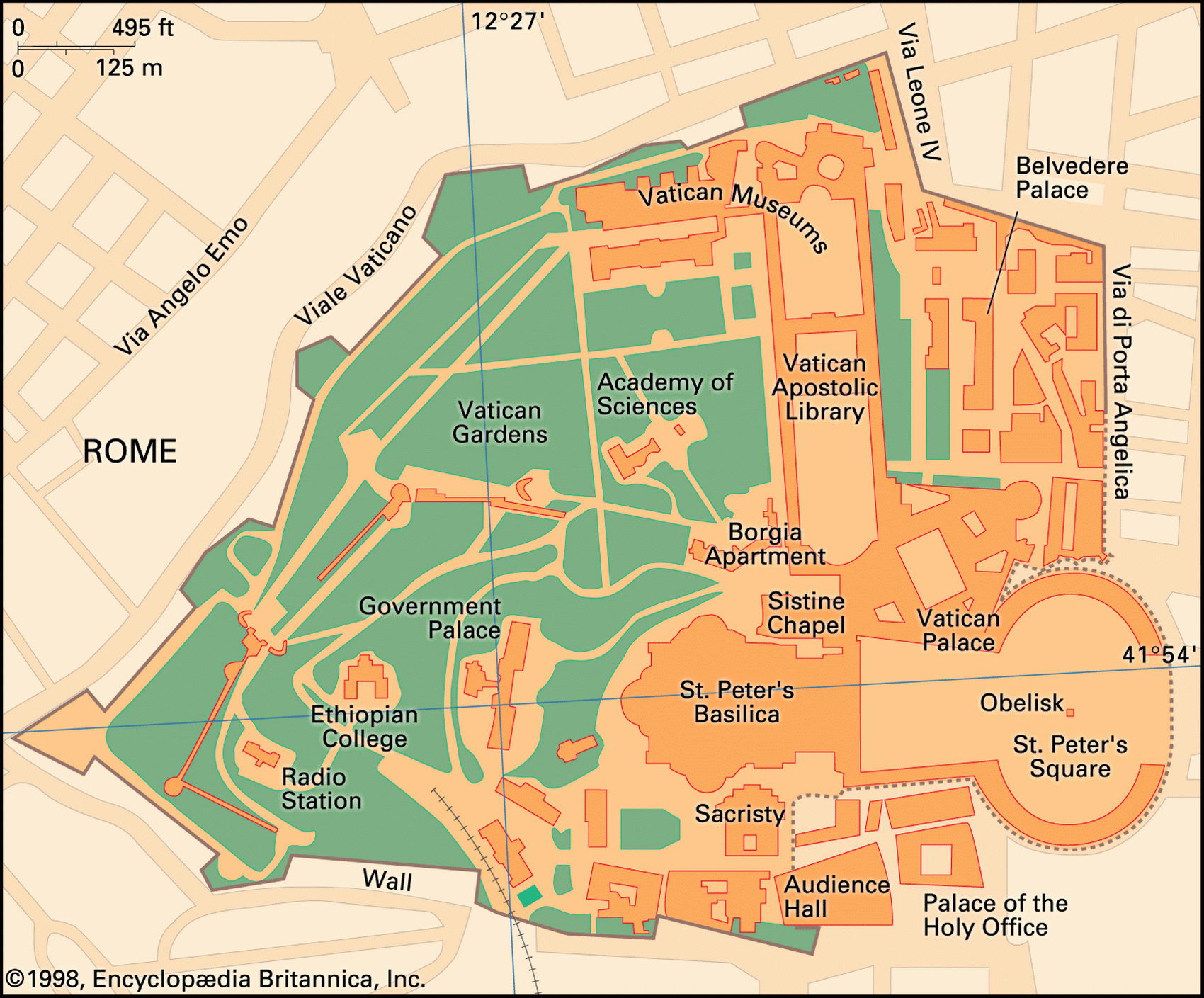Map of Vatican City and geographical facts
Vatican City on the world map. Map of Vatican City
Map of Vatican City. Where Vatican City is on the world map. The main geographical facts about Vatican City - population, country area, capital, official language, religions, industry and culture.

Vatican Fact File
Official name Vatican City State (Holy See)
Form of government Monarchical-sacerdotal state with single legislative body (Pontifical Commission)
Capital Vatican City
Area 0.44 sq km (0.16 sq miles)
Time zone GMT + 1 hour
Population 900
Projected population 2015 1,000
Population density 2,045.5 per sq km (5,625 per sq mile)
Life expectancy Not available
Infant mortality (per 1,000) Not available
Official languages Italian, Latin
Literacy rate 100 %
Religion Roman Catholic 100%
Ethnic groups International
Currency Euro
Economy Services 100 %
GNP per capita Not available
Climate Temperate, with mild winters and hot summers
Highest point Unnamed location 75 m (246 ft) Map reference Page 295
Occupying a hill in the city of Rome on the western bank of the Tiber, and including the pope's summer residence at Castel Gandolfo southeast of Rome, and ten churches throughout Rome as well, Vatican City is the world's smallest state, and probably its most homogeneous. Its population is 100 percent Catholic, and it is the home of the pope, the spiritual head of the Roman Catholic Church, and several hundred clergy and Catholic lay people, all employees of the Vatican.
Vatican City is all that remains of the former Papal States, which from the fourteenth to the nineteenth centuries expanded from a palace on the present site to cover an area—with changing borders—of almost 45,000 sq km (17,000 sq miles) which was a large part of mainland Italy. During the Risorgimento ("resurrection"), which resulted in the unification of Italy in the 1860s, most of this area was absorbed into the new Italian state headed by King Victor Emmanuael II. From 1870 until 1929, neither the Church nor successive Italian governments recognized each other's sovereignty over the area, which the Church refused to relinquish to the state. In 1929, however, Pope Leo XI and Mussolini concluded an agreement—the Lateran Treaty—under which the independence of the Vatican City State, and the pope's temporal sovereignty over it, was recognized in return for the Church's recognition of the kingdom of Italy. Under this treaty, Catholicism was also recognized as the state religion of Italy.
This provision, along with a number of other privileges enjoyed by the Church in Italy, was removed under a subsequent Church-state agreement, known as a "concordat", signed in 1984. Vatican City now has diplomatic relations with more than 100 countries, although it is the only remaining independent country not represented in the United Nations. It has the pope as its head of state, while responsibility for administration of the area is vested in a Commission of Cardinals. The roles of secretary of state, chief of staff, and foreign minister are filled by senior members of the clergy.
Surrounded by medieval walls, Vatican City contains the huge St Peter's Basilica, built between 1506 and 1626 by a number of architects, including Michelangelo and Bernini. Pilgrims come to visit the basilica in vast numbers throughout the year, but particularly to celebrate Christmas and Easter. Visitors also come to see the richly endowed Vatican Museums, which include the renowned Sistine Chapel (the personal chapel of the popes) in the Vatican Palace. Parklands cover most of Vatican City.
Vatican City has its own radio station, publishes a daily newspaper, and issues its own stamps and coins. It also has an army—the 100-strong Swiss Guard—which is responsible for maintaining security. Vatican state finances depend on voluntary contributions, interest on extensive investments, and on the income derived from millions of tourists.